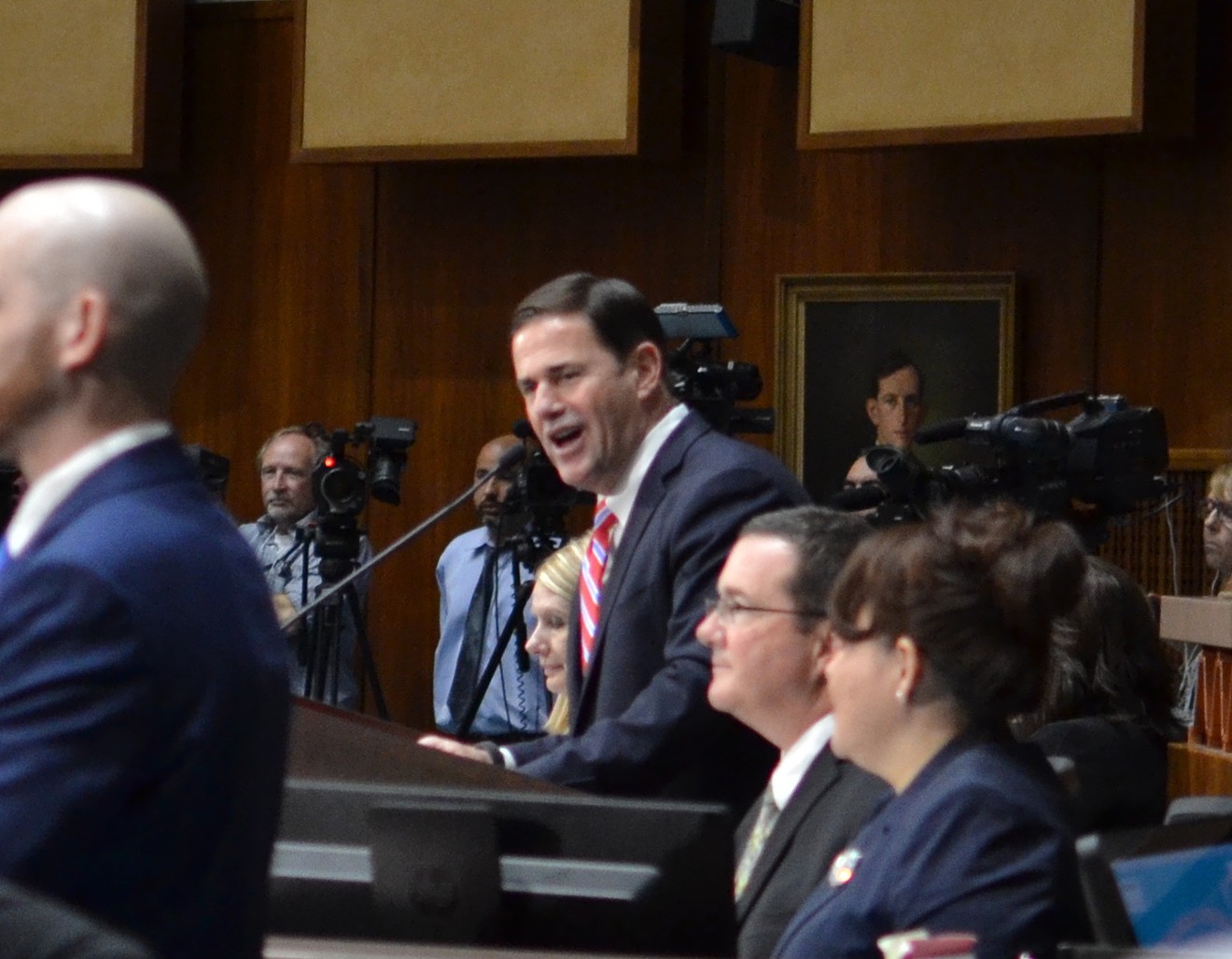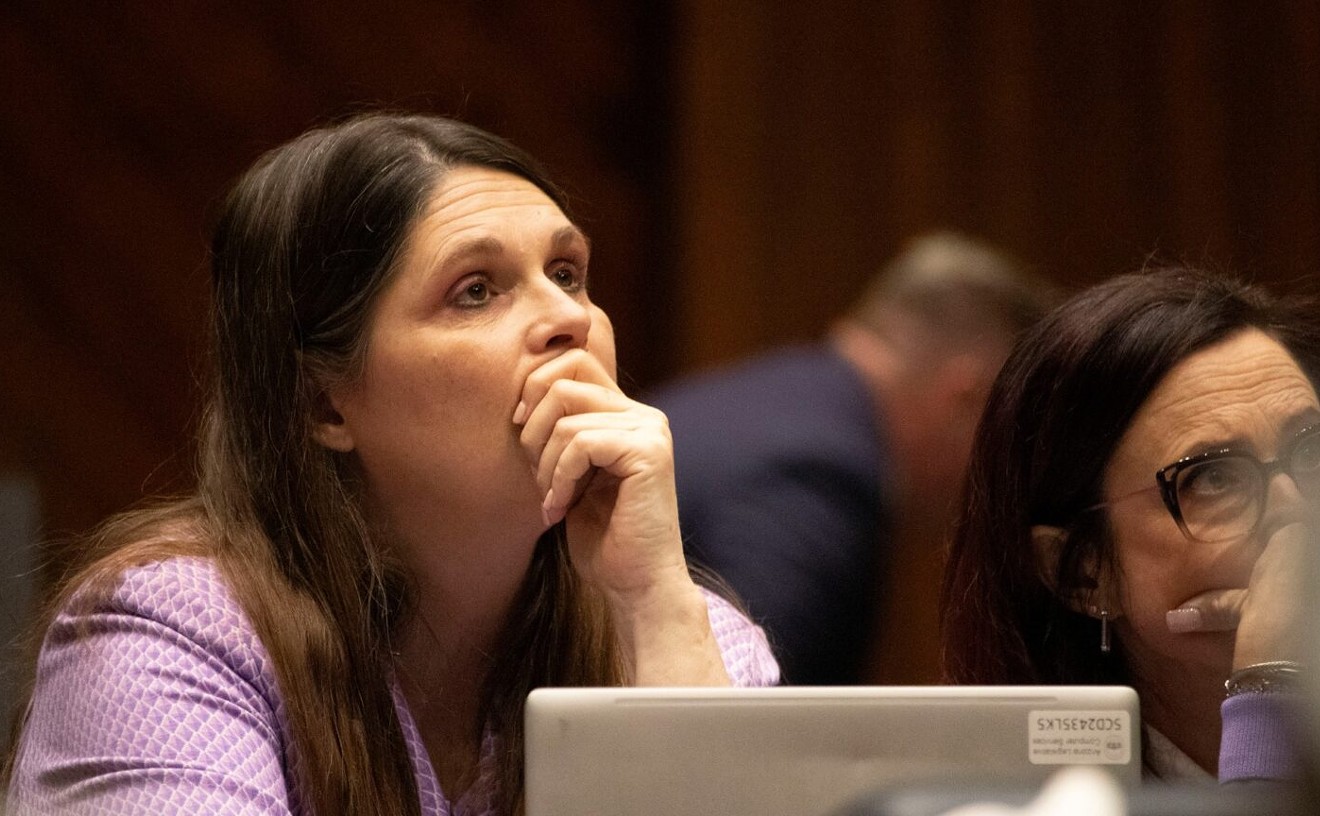“It’s time to ratify the Drought Contingency Plan. And we have 17 days to do it,” he warned state representatives, senators, and a slew of other former and current elected officials during his State of the State address. The Drought Contingency Plan refers to a set of agreements among the seven Colorado River basin states, which include Arizona, to take less water from the river in order to prevent it from dropping to catastrophically low levels.
Arizona must both pass an internal version of the plan, which spells out how Arizona water users will share cuts to their Colorado River water, and authorize Tom Buschatzke, the director of the Arizona Department of Water Resources, to sign an interstate plan on behalf of the state.
In December, the federal Bureau of Reclamation imposed the January 31 deadline for Colorado River basin states to finish their plans. If states miss this deadline, the Secretary of the Interior will decide how to distribute water cuts to states.
Arizona and California are the last states that still have to finalize their plans. And with Arizona the only one that needs to pass legislation to do so, other Colorado River basin states are anxiously waiting for Arizona to wrap things up before month's end.
In his remarks, Ducey described water security as the greatest challenge ahead for Arizona. And it was one that would come against the backdrop of a drier future, he said, although he did not specifically mention climate change. He called on legislators to be bipartisan as they worked toward passing the Drought Contingency Plan, and he tried to frame water as a neither political nor partisan.

Arizona House Speaker Rusty Bowers during the opening session of the legislature, January 14, 2019.
Elizabeth Whitman
House Speaker Rusty Bowers said he was glad that Ducey called attention to the remaining 17 days before the deadline. He warned that getting the Drought Contingency Plan through the legislature would not be easy, even though he described the odds of it not passing as “low.”
“It’s going to be a tough sell,” he told Phoenix New Times. Lawmakers don't have a special session scheduled to work on Drought Contingency Plan legislation, but Bowers said legislators would ask for one if necessary.
“We’re just going to hammer it through the legislative process,” he said. For now, the challenge is to cobble together water supplies for the groups set to lose a lot of water, like farmers in Pinal County.
Under the most recent version of the Drought Contingency Plan, these farmers will have to return to pumping groundwater for irrigation instead of using water from the Colorado River. In recent weeks, they’ve sought funding in increments — $5 million here, $5 million there — to cover the costs of building the necessary infrastructure, which they estimate could cost up to $50 million.
“Disparate dollars in disparate places make this thing work,” Bowers, who has a penchant for the literary, said.
During Ducey's speech, two legendary figures in Arizona's water history sat about 10 feet in front of him: former Governor Bruce Babbitt, who presided over Arizona’s 1980 Groundwater Management Act, and former Senator Jon Kyl, who played a key role in the federal Water Settlement Act of 2004.
Babbitt said that he would “be around” for the next few weeks to help with passing the Drought Contingency Plan. He wasn’t doing anything specific, Babbitt told New Times, but he would be talking with friends in the Legislature and urging them “to really bear down and get this done.”
Last Friday, legislators started attending primer sessions on water policy and the plan. Babbitt is not involved in these sessions, which are run by drought negotiation co-leaders Buschatze, and Ted Cooke, the general manager of the Central Arizona Project. Two more sessions will be held this week.

Former Arizona Governor Bruce Babbitt, left, during the opening session of the Arizona legislature, January 14, 2019. Former Senator Jon Kyl is just behind him.
Elizabeth Whitman
“It’ll solve itself” is not something Arizona can fall back on, at least not anymore. In 2020, the Bureau of Reclamation projects, levels at Lake Mead on the Colorado River will likely fall below 1,075 feet above sea level.
At this mark, the federal government will declare an official shortage, and Arizona will start to take cuts to its supply of Colorado River water. Figuring out how to share those cuts among various stakeholders — cities, tribes, industries, farmers, developers — has been contentious, at best.
Monday is the third time in three months that Ducey has tried to send the message from on high that Arizona is at a critical point when it comes to water.
In November, when negotiations over Arizona’s Drought Contingency Plan seemed on the verge of collapsing, he penned an op-ed in the Arizona Capitol Times urging stakeholders to come up with a plan. He said he would request $30 million in his budget for a drought plan that abides by his principles, which include leaving water in Lake Mead.
And in his inauguration speech last week, Ducey warned, “With a critical shortfall imminent [on the Colorado River], we cannot kick the can any further.”
The partial federal shutdown, which began December 22, has made the final days of Arizona’s drought negotiations even more difficult. But the Bureau of Reclamation has no plan to change the January 31 deadline, Leslie Meyers, Phoenix area manager for the bureau, told reporters after the most recent meeting of the Drought Contingency Plan Steering Committee, on January 8.











